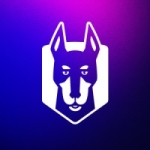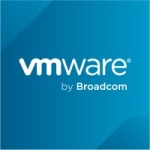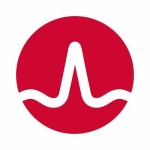The primary use case for deployment of vRealize Automation was to facilitate a service provider web portal front-end to our Hosted Private Cloud and Business Continuity solution. This is a fully automated virtualized SDDC, using VMware as the base hypervisor. We also incorporate NSX for network automation, vCenter Orchestrator for workflow execution, and additional software packages to support the service as a whole (vROps, Log Insight, Network Insight, NSX Manager, etc.).
Our core networking is made up of a spine/leaf architecture using Cisco ACI/APIC and our storage is virtualized behind a Hitachi (HDS). We use SnapMirror and NetBackup as our DR tools.
We needed vRA to easily integrate with our hypervisor, orchestration, security (tenant segmentation, PCI), workflows, custom code, and internal monitoring/management tools. Since we didn’t have time to develop our own web front-end during the development sprints, vRA saved considerable time and resource cycles. Its ability to easily integrate with all of the VMware cloud products as well as public cloud providers, like AWS and Azure, out-of-the-box, makes it an even more powerful tool.
vRealize Automation is improving the way we host and serve up our fully hosted private cloud solutions as a cloud service provider. It has created efficiencies in how we deploy, manage, monitor, and develop within the service. It provides velocity both from management and customer perspectives, from ingesting new catalog items, developing new workflows for additional features, and/or allowing customer access to multiple guest OS instances at scale in a shorter time frame.
From a service provider perspective, its ability to integrate with vRealize Operations and vRealize business management suites provides a window for being able to execute predictive and reactive analysis that you can use to automate your cloud solution from a resource, management, and/or customer perspective.
vRA provides that single pane of glass for our cloud tenants to deploy, monitor, access, and manage their VMs/guest operating systems. vRA allows a cloud service provider to quickly build out a web portal front-end interface that easily integrates with all of the VMware vRealize products, providing an all-encompassing cloud solution.
Additional features also allowed us, as the service provider, to configure branding options for the site itself, as well as full integration into the orchestration layer, including workflows, security control, reporting, billing for our cloud admins, tenant admins, and end-user (customer).
The most valuable feature is vRA’s ability to integrate whether with additional VMware vRealize suites or other vendors' cloud products.
Also, vRA in combination with vCenter Orchestrator makes it very easy to design, import, and deliver quality workflows and blueprints. These can be used for various functions within the cloud portal, from both a production as well as a business-continuity perspective. Examples include automated failover activities in combination with SRM and SRA Replication, VM deployments based on a catalog, being able to roll out an entire LAMP stack dev environment with the click of a button, or ingest and inject data into back-end CMBDs, etc.
Its fully integrates with network and storage virtualization via NSX and workflow development, and secure APIs are available to customize automation using other vendor tools such as Puppet, Chef and/or PowerShell.
There are many features that I find extremely valuable but vRA’s ability to be a central hub for all of the parts that make up a hosted private or multi-tenant cloud solution is extremely valuable. Ultimately, the outcome of this design is a highly available and agile solution with a wide array of integration that enables you to provide a fully automated, scalable private cloud solution that can meet the market and customer demands now and in the future.
I have listed some additional features below for general reference:
- Easy integration into other VMware-based vRealize cloud products via SSO
- Single pane of glass interface
- Parameterized blueprints to enhance reusability and reduce sprawl
- Policy-based optimization of virtual machine placement
- NSX integration enhancements
- Enhanced control of NSX-provisioned load balancers
- Enhanced NAT port forwarding rules
- NSX security group and tag management
- Automated high-availability for NSX Edge Services
- NSX Edge size selection
- Enhanced vRealize Business for Cloud integration – cloud nanagement platform
- Improvements to high-availability
- Health Service
- Configuration Automation Framework – Puppet Integration
- REST API
Most of the areas for which there was room for improvement are being covered in the latest 7.4 release which will include all new workflows for additional management of a customer’s cloud and infrastructure, directly from the Web portal itself. Some of these features today require the ability to build out your own workflows, which can become complicated if you don’t have the knowledge base.
VMware is aware of this and is making the next version of vRA and vCenter Orchestrator with this in mind. They are going to include additional granular-level controls from within the self-service portal itself. This will allow us, the service provider, to pass these additional features on to our customer base giving them greater control and management of their dedicated cloud.
Some of the new vRA 7.4 release features include:
- New and enhanced curated blueprints and OVF files
- New custom form designer
- Enhanced multi-tenancy capabilities
- vRealize Suite Lifecycle Manager now extends to IT content management
- New IT content lifecycle management
More than five years.
No issues with Stability now working on testing out the new version on NSXt via blueprints which will provide a whole new level of control and management for our SDDC virtualized networking stack.
No issues currently with scalability of the product or its uses cases it was implemented for.
One of the best support and architecture teams we have ever worked with from a vendor perspective. Very knowledgeable and on the cutting edge of virtualization.
The software setup is fairly easy but does require knowledge of the VMware product suite. The complexity comes in whether this a service or a dedicated infrastructure. Normally in service oriented infrastructures which are purpose built for multi-tenancy where you have multiple customers hosting multiple sub-tenant customers which require many layers of micro-segmentation and security to be built in. In a dedicated infrastructure you are building for one business or a single customer even though they have segmented sub-tenants such as account, IT, Operations etc it is all internal to that business. The level of micro-segmentation and security is much less in complexity to provide a final solution.
We implemented a majority of the service internally and only reach out to the vendors developers prior to making changes in the design that could impact rework to correct bottle knocks and development dead ends.
From experience working with other service provider cloud products, VMware vRealize Automation Center is the best out-of-the-box solution to quickly build out your cloud portal and fully integrate it into your orchestration layers, as well as your compute and storage infrastructures. It can support multiple public clouds as well as hypervisors, providing that single pane of glass for management, operations, and reporting. I would give it a nine out of 10 as there is always room for improvement, since cloud is always evolving.
















